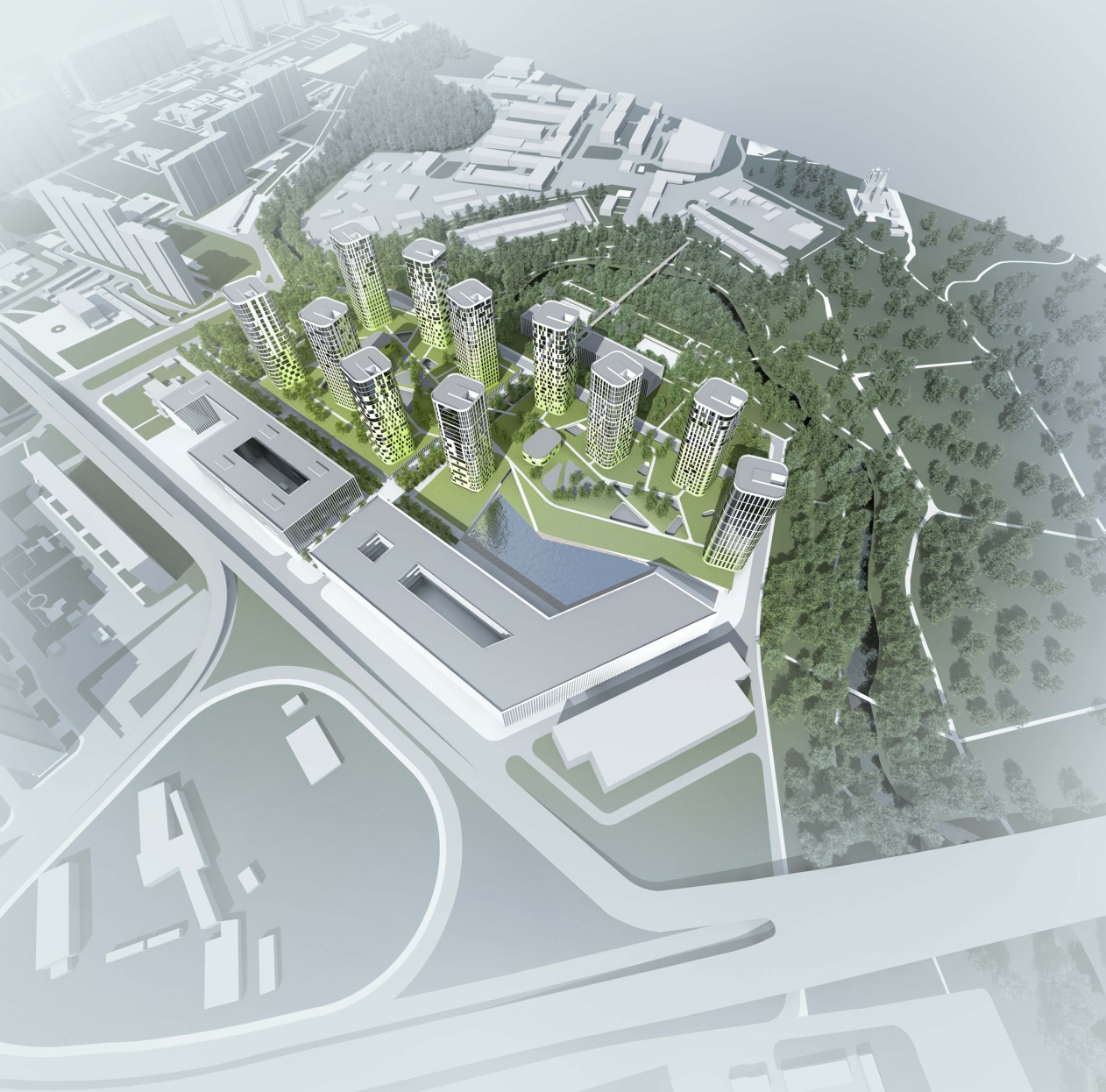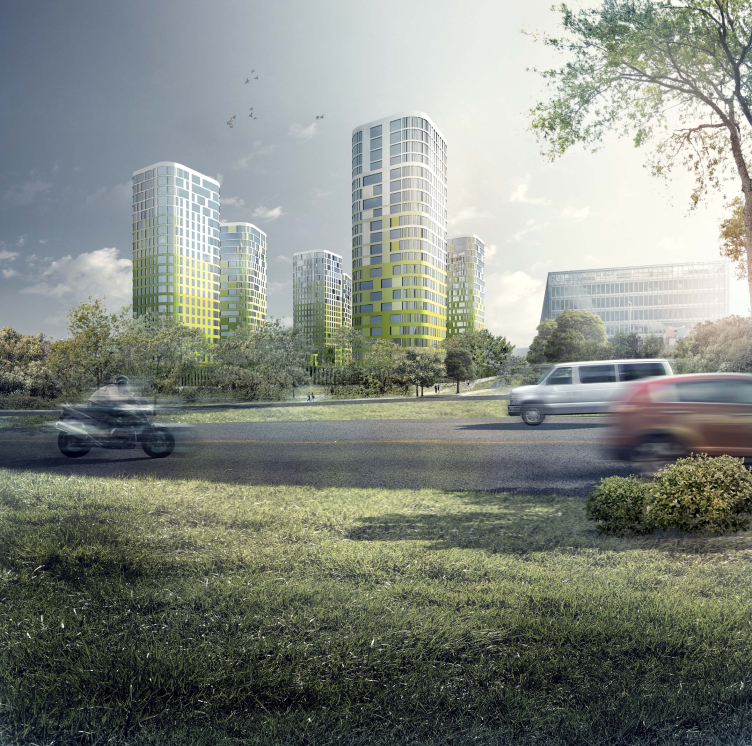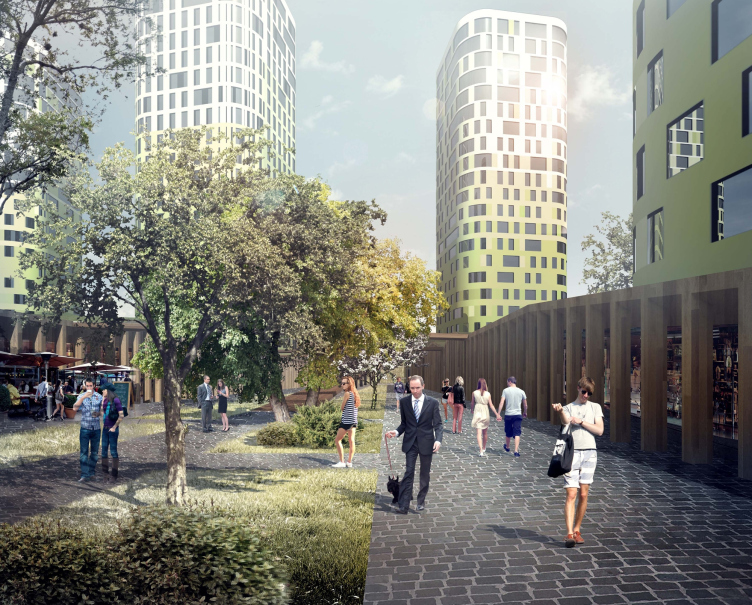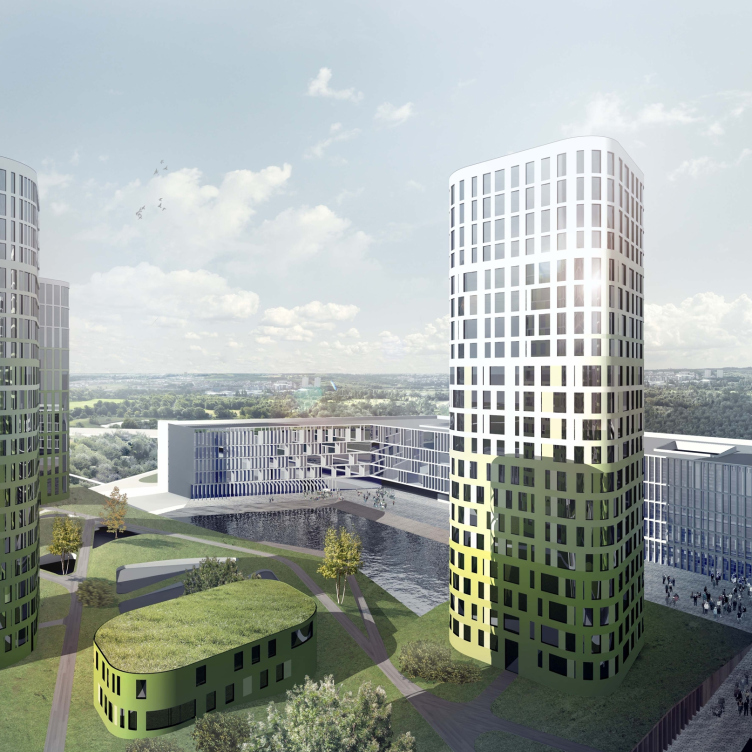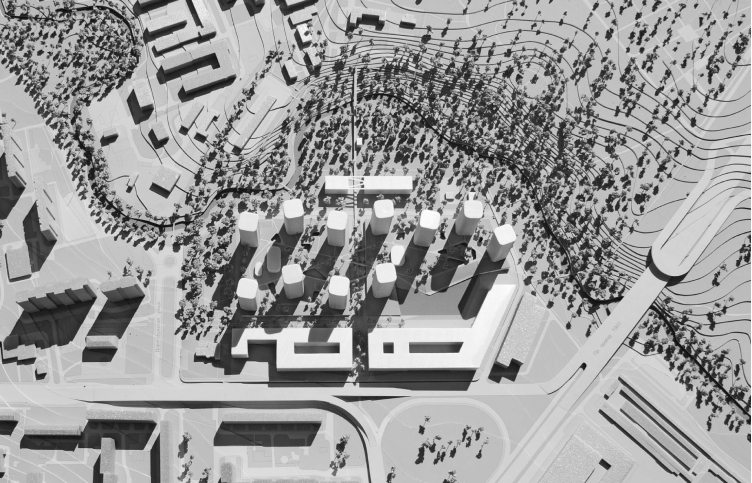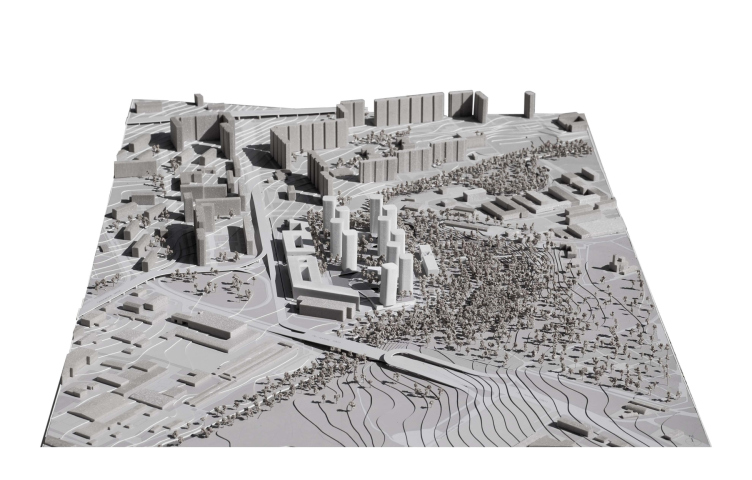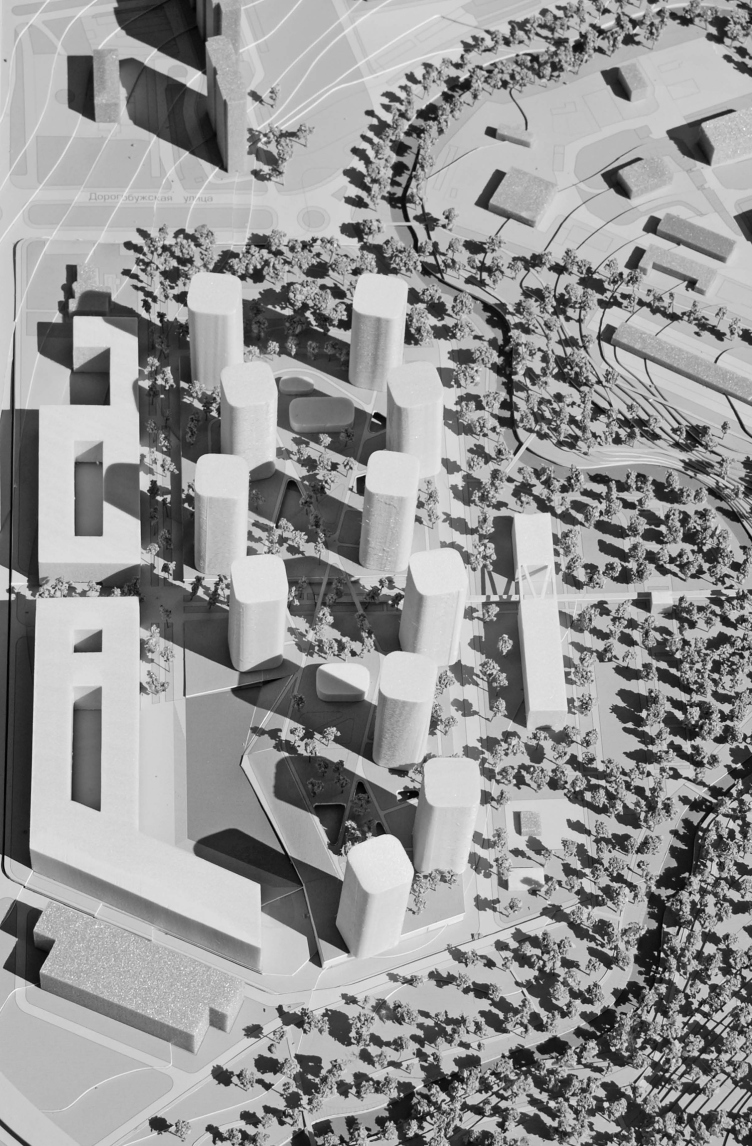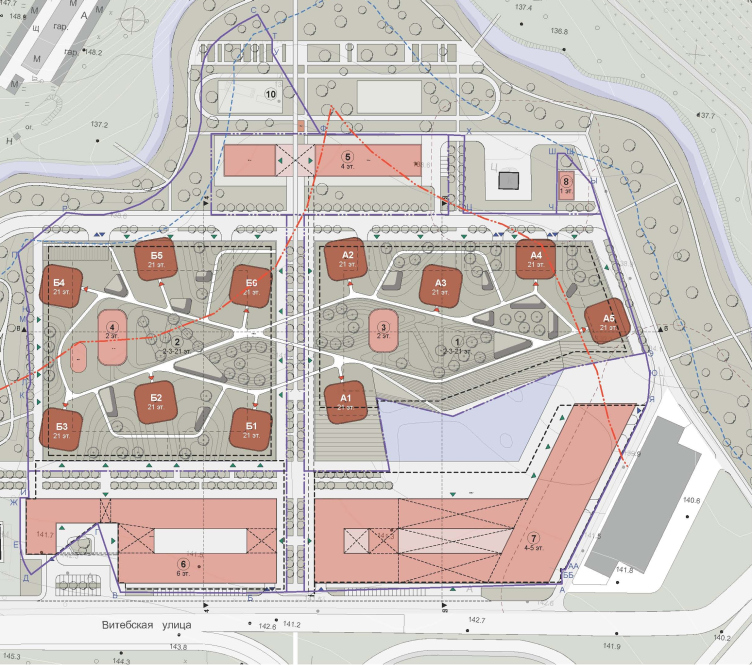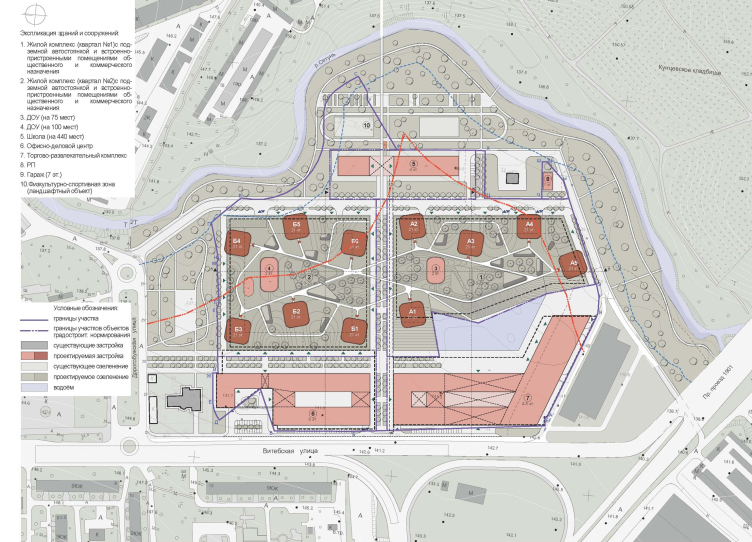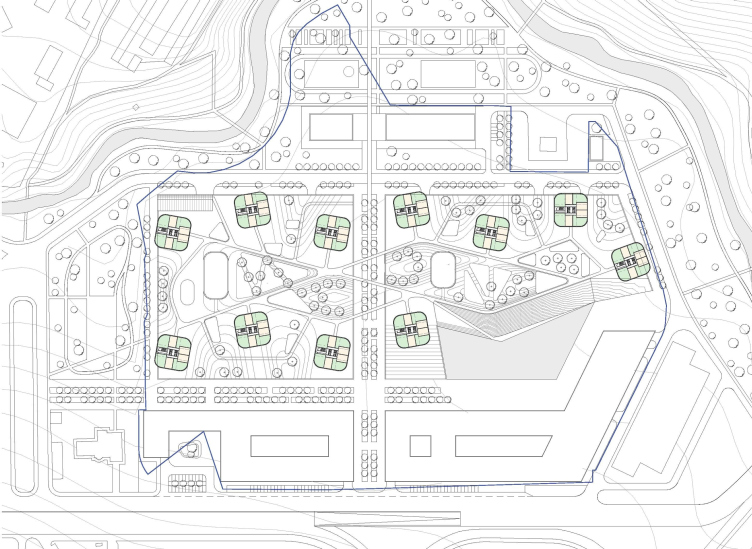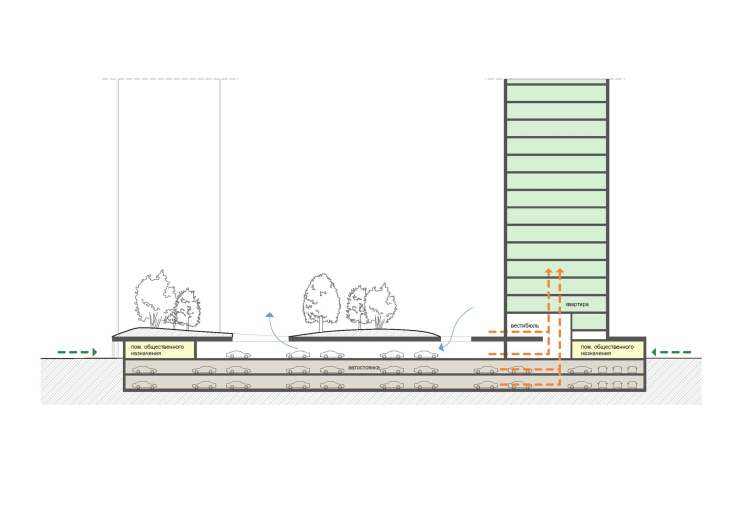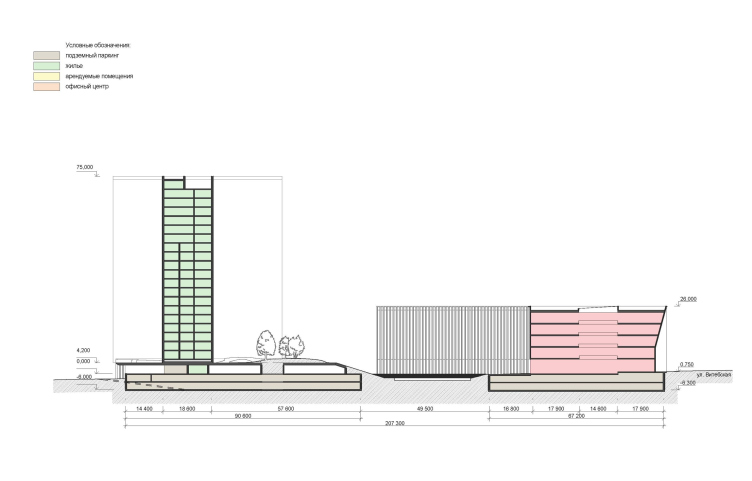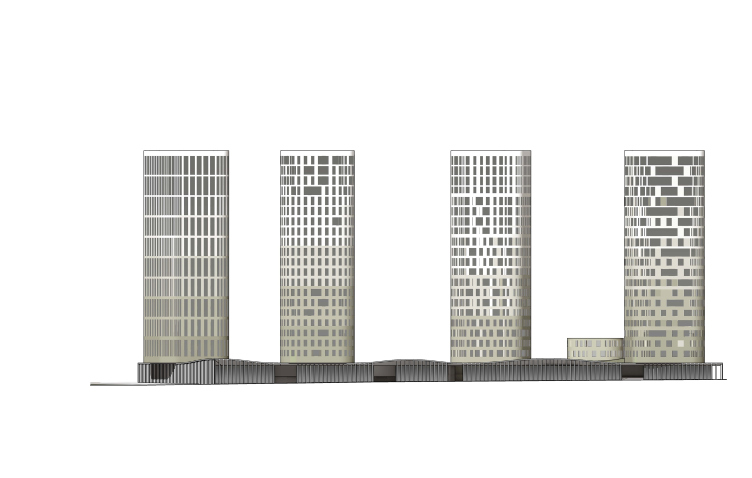
Integrated multifunctional complex in the place of "Artificial Leather Factory" © «Sergey Skuratov Architects»
The factory whose territory is about to be reconstructed is located in the Western Administrative District of Moscow and is a part of a large industrial "blueprint" thresholded by the Moscow Ring Road, the Mozhaiskoe Highway, and the Ryabinovaya Street. The semi-derelict local industrial park borders on a residential block of fairly old houses, the Kuntsevskoe Cemetery and the quaintly winding Setun River whose banks are all but the only green area of this huge territory. In the June 2013 project of a multifunctional development that would be built in the place of the former factory, Sergey Skuratov expands the territory of the nature reserve by adding the new green spaces, and making a landscaped park in between the residential buildings.

Integrated multifunctional complex in the place of "Artificial Leather Factory" © «Sergey Skuratov Architects»
If we turn our blind eye to its industrial past and to its proximity to the graveyard, the land site located between the urban territory and the woodland looks more attractive than otherwise. Its relief smoothly lowers from the road towards the river, along which the architects propose go mane a park, while the factory buildings have a little creek on between them. The task that the architects were to do was considerably simplified by the fact that absolutely all the old factory buildings were to be demolished. Generally, the "givens" were all but perfect had not it been for but one "but": the land site almost immediately borders on the so-called "public garage" - a monstrously sized and proportioned multilevel car park. This is why the first thing the architects had to do was think of a way how to visually separate the complex designed from this monster.
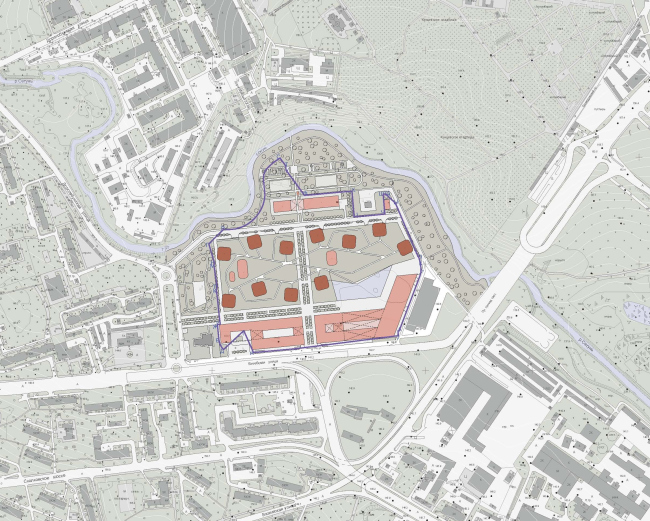
Integrated multifunctional complex in the place of "Artificial Leather Factory" © «Sergey Skuratov Architects»
Sergey Skuratov reminisces that initially he was going to base his project on the principle of several housing belts, the closer to the water the thinner their density - the very proximity to the natural reserve suggested that idea - but the necessity to fence the complex away from the car park made the architect treat the first line if houses as a protective screen of sorts. Along the outside border of the land site, the architects concentrate all the commercial functions: these are two rather elongated volume 5 and 6 stories high, one of which being occupied by an office center and the other - by entertainment and shopping functions. Had it not been for the garage, both would have probably easily find their place all along the Vitebskaya Street but, because the garage stands at an angle to it, the building of the shopping center took the shape of a "bird mark" open to the territory of the residential complex. Peculiar is the fact that it almost "embraced" the land site's reservoir, and, in order to create, between it and the building, a fully-fledged promenade, the architects change the geometry of the creek, turning it on the plan into yet another bird mark and thus making it an indispensable part of the next housing belt - the landscaped park between the residential houses.

Integrated multifunctional complex in the place of "Artificial Leather Factory" © «Sergey Skuratov Architects»
Thus the street housing front turned out rather monolith-looking. Avoiding the feeling of a too-rigid structure is achieved with the help of a small pedestrian square that looks as if it were integrated into the building of the office center, as well as into the city-oriented lower floors of the buildings and the broad boulevard that they are flanking from both sides. This green axis is meant to tie in all the designed units of the complex into a single whole and provide the access to the river, and then, via a light trestle, to the opposite bank as well, to the Sudarium Temple on the Setun. Between the public and the residential sectors, there is yet another boulevard: running parallel to the Vitebskaya Street, it forms, together with the main pedestrian axis, a simple and comprehensible coordinate system of the new neighborhood.

Integrated multifunctional complex in the place of "Artificial Leather Factory" © «Sergey Skuratov Architects»
In the central part of the construction site, on both sides of the main boulevard, there are two "stages" of the housing blocks - groups of five and six 21-story towers. Rather compact on the plan, the high-rises stand at different angles in respect to the main axis, while their own corners are noticeably rounded. "Shooting up" from the stylobate of the landscaped park and interconnected with a sophisticated system of paths and trails, on the plan, they look more like grapevine rather than a residential neighborhood. We were considering all possible options of positioning our blocks and came to a conclusion that in this particular case towers were the most appropriate solution if all: they gave us a dramatic and at the same time penetrable silhouette, the amount of useful space our customer required, and the offset to the first line of the houses - Sergey Skuratov comments.
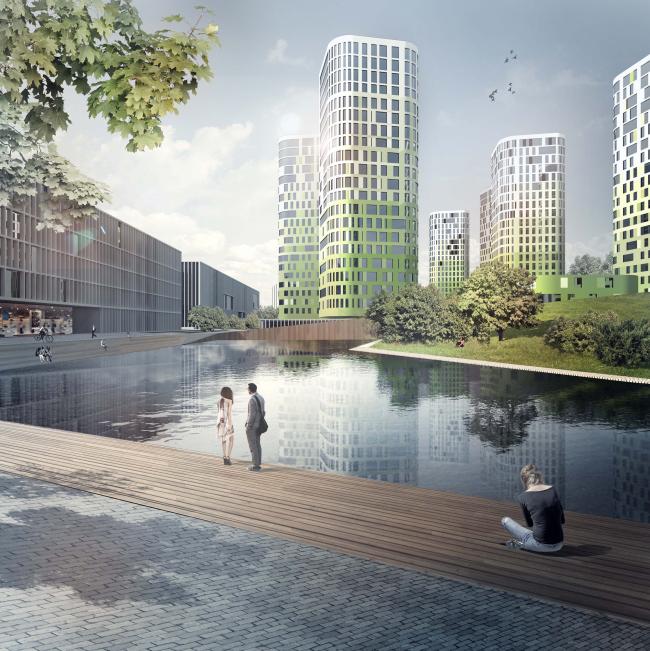
Integrated multifunctional complex in the place of "Artificial Leather Factory" © «Sergey Skuratov Architects»
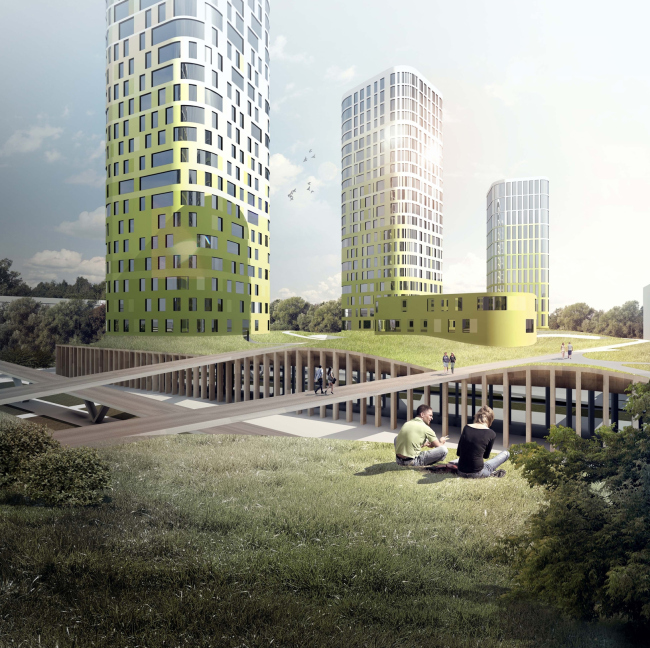
Integrated multifunctional complex in the place of "Artificial Leather Factory" © «Sergey Skuratov Architects»
The architect confesses that half a year later he used a similar solution in the project of a residential complex at the Rublevskoye Highway: in that case, the architect also inserts between the towers a fully-fledged park underneath which the guest car park is organized. Here, however, the landscaping area is considerably larger, and, hence, the space scenarios are more diverse: the sophisticated system of trails and ramps, the playgrounds, the recreation spots, and even kindergartens have more than enough room for them here.

Integrated multifunctional complex in the place of "Artificial Leather Factory" © «Sergey Skuratov Architects»

Integrated multifunctional complex in the place of "Artificial Leather Factory" © «Sergey Skuratov Architects»
As for the school building, it got placed closer to the river. The double-part volume (the junior and the senior high are divided into separate buildings), united by a graceful pergola, is treated by Sergey Skuratov as the last urbanist "injection" into the tissue of the natural reserve. Surrounded by sports and playgrounds, it looks as if it were dissolving in the recreational area of the Setun River.
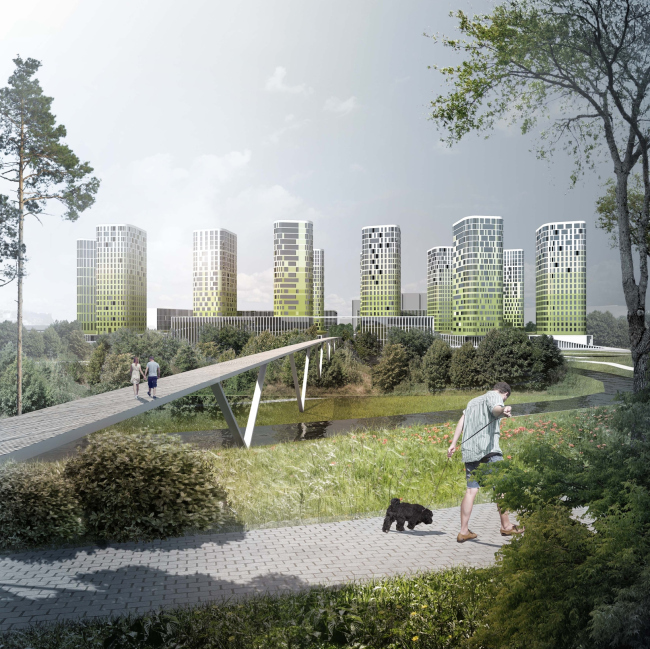
Integrated multifunctional complex in the place of "Artificial Leather Factory" © «Sergey Skuratov Architects»
The contest for the best architectural concept is not about detailed elaboration of the architectural proposal, and Sergey Skuratov's project has in it but general outlines of how the future residential complex might look like, built in the stead of the former leather factory. For one, its vertical centerpieces - the high-rises - all got different but still similarly styled facades whose color gradually mutates from dark green to white. Looking as if they were an upward continuation of the landscaped park, they would bring the life-affirming bright colors into what is now a predominantly gray territory.

Integrated multifunctional complex in the place of "Artificial Leather Factory" © «Sergey Skuratov Architects»
We will stress at this point that it it had not by chance that the subjunctive mood is used here: as of now, the results of this contest are still left unannounced, and Sergey Skuratov does not even know who of his colleagues he had to rival. As the architect himself confesses, last year his company took part in five contests, but their organization as well as the outcome of this particular competition turned out to be plain discouraging. Instead of naming the winner or somehow organizing the submitted works, the customer re-sold this land site, never making use of the proposed concepts, and this means, regretfully, that the project by "Sergey Skuratov Architects" is almost sure to remain forever on paper.

